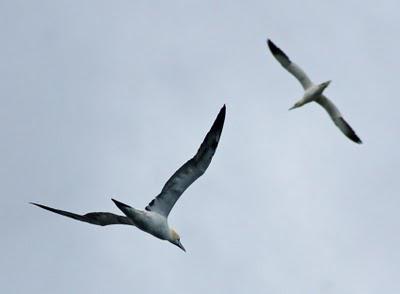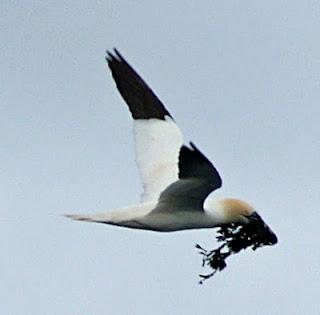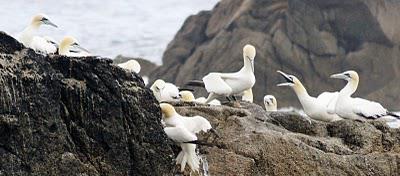
The Sept Iles archipelago off Perros Guirec in Brittany is now a nature reserve. In fact, the story of the French equivalent of the RSPB, the LPO, begins here. When seaside tourism became popular in the late nineteenth century, one railway company thought of a great idea to attract passengers: a Breton safari. Obviously, the area is pretty short of big game - but it wasn't short of puffins. Not, that is, until these visitors were encouraged to shoot as many as they could, leaving them to rot where they fell. People appalled at this avian massacre protested, formed the LPO in 1912, and managed to transform the islands from a hunting ground to a seabird reserve.

The population of puffins had fallen from thousands to just 400 couples. Although they are now spared from hunters, the population remains vulnerable to pollution: not only the more dramatic oil spills but also the regular emptying of oil and other pollutants from cargo ships directly into the sea. As a result, there are only about 200 couples today. They are easily identified by their distinctive beaks; another unusual feature is that they literally 'fly' with their wings when fishing underwater, rather than paddling with their feet like other birds. They are also smaller than you might expect, and not keen to come too close to the boat - hence the poor quality of my photographs!

 Far more noticeable (and easier to photograph) were the gannets. There is a colony of nearly 20,000 of these seabirds on the ile Rouzic: one end of the island is literally white, even when seen from a distance - not with guano but the birds themselves. They flew over and around the boat as we sat there, beaks full of food which they carry back for their single chick. Much of it is caught by diving: the birds plummet at great speed into the water, sometimes from heights of 30 metres to depths of six or seven metres, and emerge with a beak full of fish or seaweed.
Far more noticeable (and easier to photograph) were the gannets. There is a colony of nearly 20,000 of these seabirds on the ile Rouzic: one end of the island is literally white, even when seen from a distance - not with guano but the birds themselves. They flew over and around the boat as we sat there, beaks full of food which they carry back for their single chick. Much of it is caught by diving: the birds plummet at great speed into the water, sometimes from heights of 30 metres to depths of six or seven metres, and emerge with a beak full of fish or seaweed.
There are of course many other species of birds on the islands: we saw oystercatchers, cormorants, razorbills and all sorts of gulls. Even a gray seal popped its head up to say hello! It's wonderful that the LPO has been able to create this reserve; it would be even better if their campaign against marine pollution were to succeed.

